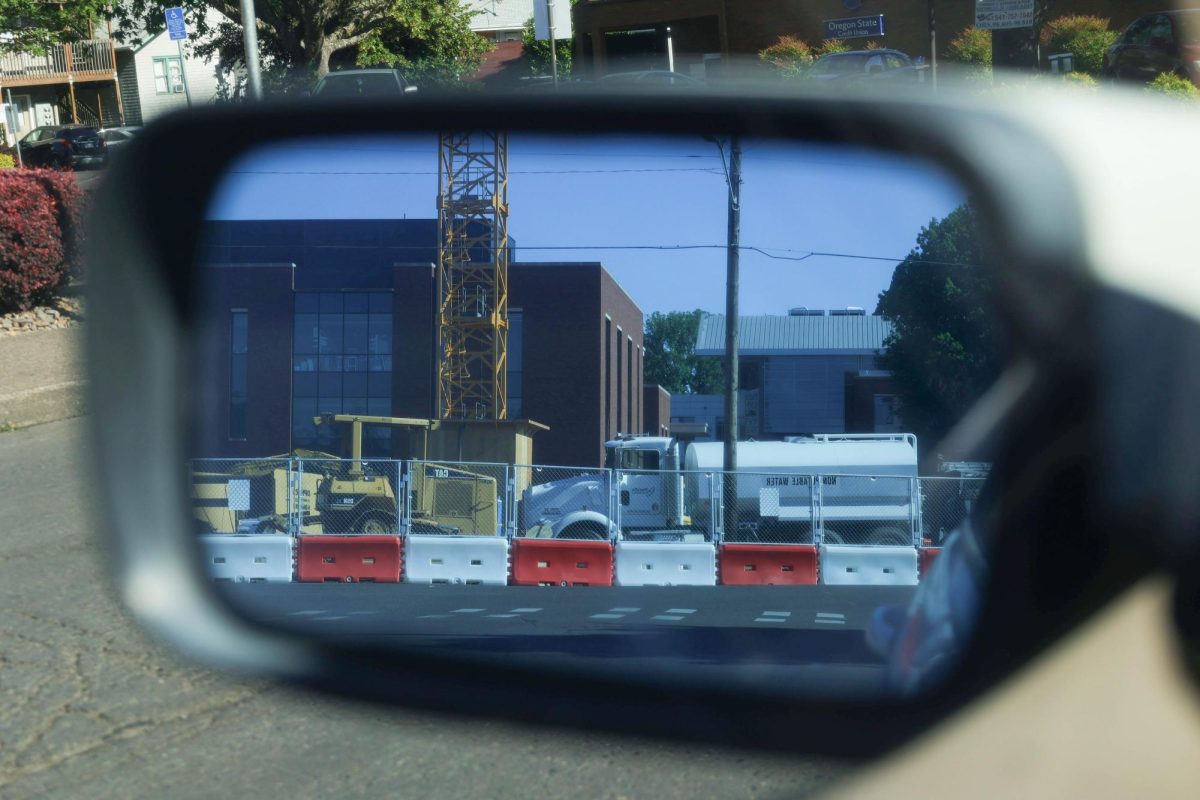Bold, brilliant colors flow through the canvas and the texture of dried paints spatters the artwork, inviting the onlooker deeper into the mind of artist Betty LaDuke, and the messages behind her creativity.
Oregon State University’s Strand Gallery and Hatfield campus are inviting the community to view an assembly of artwork by LaDuke during the winter and spring months.
Painting and traveling the globe for over 60 years, LaDuke’s artwork has hung on the walls of places across the nation including Portland International Airport and Heifer International headquarters, according to her website. At the age of 91, LaDuke continues to be featured in exhibits across the country.
Jan. 9 marked the opening day of the LaDuke exhibit in Strand Gallery on the OSU campus, which will be available in this location until March 21. Open to the public and free of charge, Strand Gallery is open Wednesdays and Thursdays from noon until 1 p.m. in Room 440 of the Strand Agricultural Building.
A complimentary exhibit was placed at OSU’s Hatfield Marine Science campus starting on Jan. 8, which will run until June 14. The Hatfield exhibit is open to the public from 8 a.m. to 5 p.m. on weekdays in the Gladys Valley Marine Science Building.
Strand Gallery will host a free reception on Feb. 22, starting at 4 p.m. and lasting until 6 p.m.; LaDuke will speak at 4:30 p.m. Hatfield’s reception will be on Feb. 21, from 2 p.m. until 5 p.m., with an artist talk at 3 p.m.
The exhibits, organized by OSU’s Agricultural Science’s Art About Agriculture, contain art from many of LaDuke’s collections, with themes of agriculture and women prevalent throughout many works.
“LaDuke’s art celebrates agricultural workers around the world. LaDuke has a particular interest in recognizing women in agriculture and art, and the social, cultural, economic, political and environmental situations that impact their ability to feed their communities,” said Owen Premore, Art About Agriculture’s directing curator.
The Strand exhibit features a couple of significant pieces, “Mali: Three Goats” and “Mozambique: Dreaming Goats”, which were chosen by Art About Agriculture to represent agriculture and farming significance around the world., Premore said that the department looks to bring together the divided sides of urban and rural communities by utilizing art to expand the awareness of agriculture.
Hatfield’s exhibit features pieces of LaDuke’s “Turtle Wisdom: Personal, Political, Playful” collection.
LaDuke states on her website that, “Turtles symbolically evolved as a personal necessity to affirm life’s continuity. Turtles remind us of the choices we can make to protect life and to honor Mother Earth,”
As an activist, LaDuke often wishes to convey messages of understanding and connection.
In a 2015 statement, LaDuke said, “These experiences are personal as well as political, as the earth is our common home. Sharing the joy, sharing the pain—that is what artists do!”
According to Premore, LaDuke is hesitant to sell her art, preferring to make more affordable reproductions of her works. Her connection to OSU was through her late husband, Entomology Professor Peter Hughes Westigard, which sparked the desire to connect with Art About Agriculture to spread awareness through her art.
LaDuke’s first donation of artwork to OSU was in 2011, a 1998 acrylic painting titled Tanzania: Days End. She continued to donate artwork to OSU, including 13 paintings to OSU’s Southern Oregon Research and Extension Center in 2019 and two 2014 pieces, Kale Harvest and Kale Weeding, donated in 2020. Over 30 pieces of art have been donated to OSU over the course of nine years.
Ashly Mauer, Art About Agriculture assistant curator, was the main mind behind the selection and setup of the Strand Gallery. Mauer wished to incorporate the wide variety and timeline of LaDuke’s work, sharing that it was purposeful to integrate a couple of older posters that highlighted the activism side of LaDuke, an aspect of the artwork that Mauer thought was important to display.
Due to the intensity of color used in much of the artwork, Mauer found it difficult to structure the gallery in a way that didn’t overwhelm the onlooker. However, Mauer felt it was significant that LaDuke’s messages behind LaDuke’s work weren’t lost to the array of colors.
Utilizing the movement of each piece, Mauer centered the featured art piece as a starting point to keep individuals moving around the gallery, pushed to the next piece by a natural flow.
For students and anyone experiencing LaDuke’s art across campus, it is Premore’s desire that an appreciation for agricultural workers and a connection to the Earth is developed, inspiring a drive to preserve the resources available.
“My hope is students will gain awareness of themselves as global citizens, both in their personal experience, but also in the decisions they make,” Premore said.
OSU forestry major Maryann Ackerman believes that on-campus art can be used as a way to enhance students’ experiences by creating a welcoming environment. She was drawn to LaDuke’s use of color and ability to create wide-ranged, diverse artwork pieces.














































































































